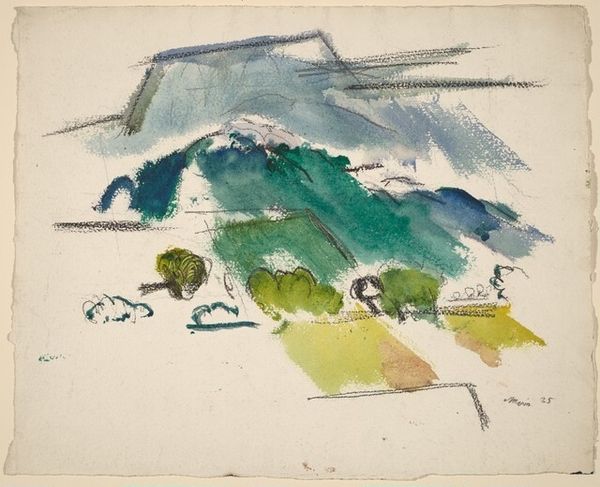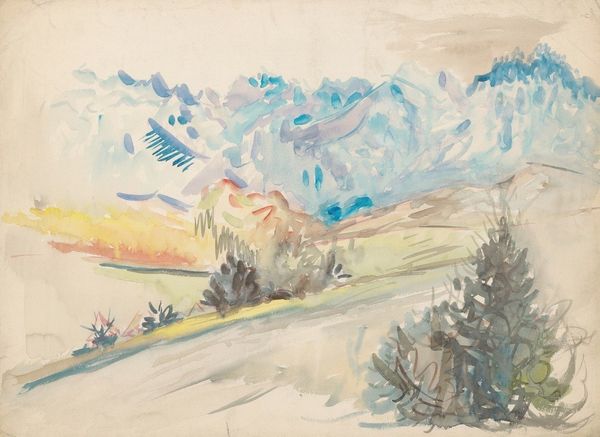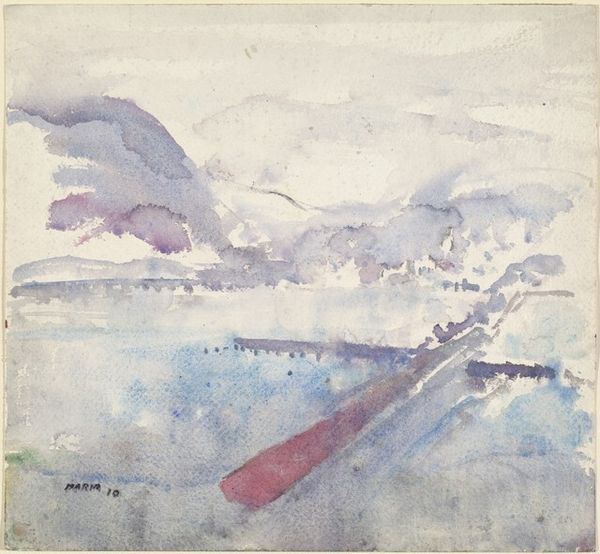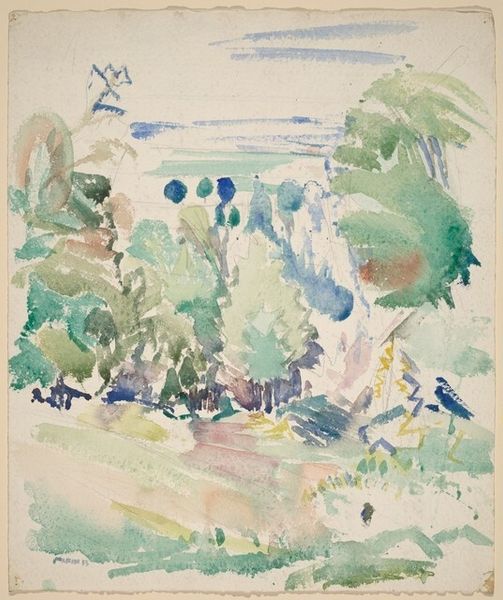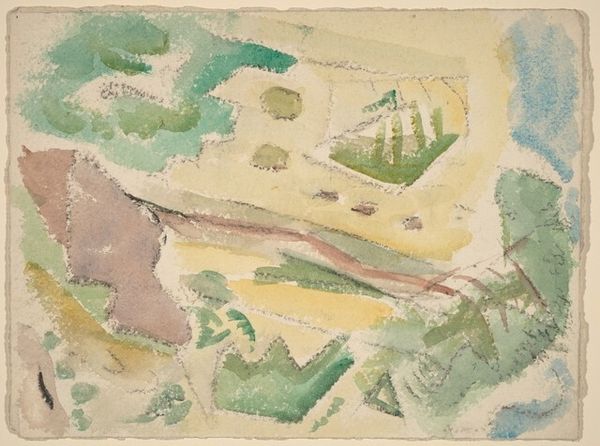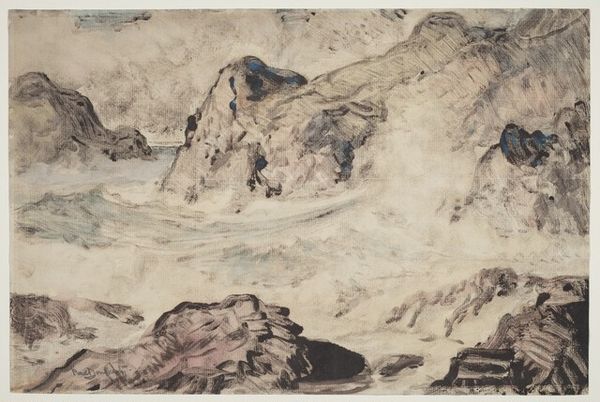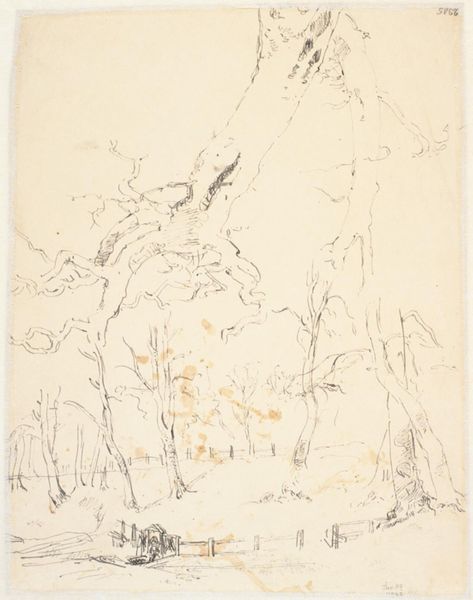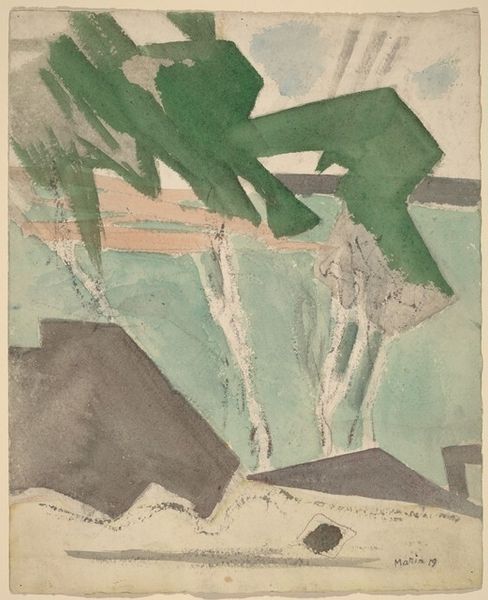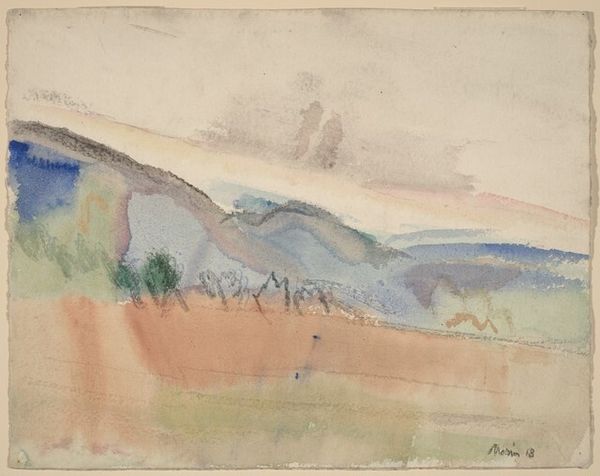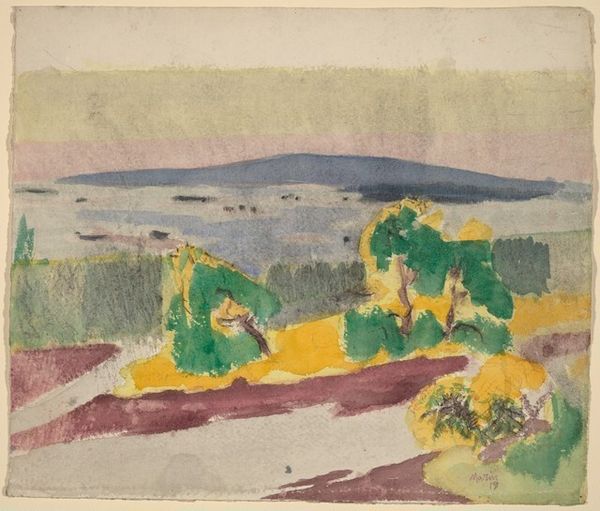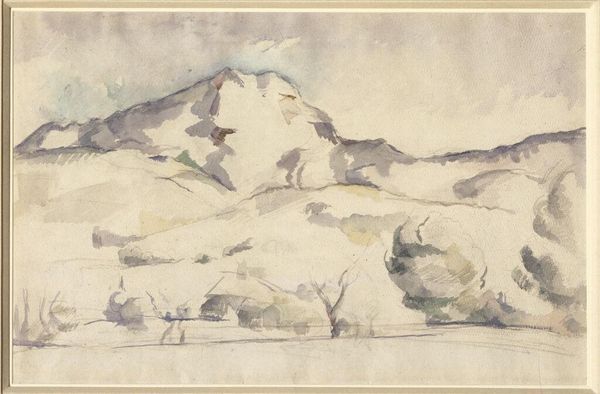![Hohenluft (Austrian Tyrol) [recto] by John Marin](/_next/image?url=https%3A%2F%2Fd2w8kbdekdi1gv.cloudfront.net%2FeyJidWNrZXQiOiAiYXJ0ZXJhLWltYWdlcy1idWNrZXQiLCAia2V5IjogImFydHdvcmtzLzQwNGExYjdhLWU0MDQtNGIzNC1iZWY4LTBiZWJjMzZkYWZiYy80MDRhMWI3YS1lNDA0LTRiMzQtYmVmOC0wYmViYzM2ZGFmYmNfZnVsbC5qcGciLCAiZWRpdHMiOiB7InJlc2l6ZSI6IHsid2lkdGgiOiAxOTIwLCAiaGVpZ2h0IjogMTkyMCwgImZpdCI6ICJpbnNpZGUifX19&w=1200&q=75)
Dimensions: overall: 46.3 x 39.1 cm (18 1/4 x 15 3/8 in.)
Copyright: National Gallery of Art: CC0 1.0
Curator: This is John Marin's "Hohenluft (Austrian Tyrol) [recto]," a watercolor from 1910. Editor: Immediately, there’s a feeling of airy detachment. The washes of color, primarily blues and greens, suggest a high-altitude scene, both serene and slightly melancholic. Curator: Note how Marin captures the essence of the landscape with these delicate watercolor washes. The structure isn't conventionally representational; instead, he utilizes a semi-abstract language. Observe how he divides the composition, leading your eye toward an upper section. Editor: And yet, that very abstraction speaks to the experience of place. The Austrian Tyrol, in 1910, was hardly neutral territory; a region steeped in Austro-Hungarian nationalism on the brink of the First World War. I see a tension between the seemingly apolitical landscape and the socio-political forces gathering in Europe at that time. Doesn’t the lightness feel… almost fragile? Curator: Precisely. He avoids concrete forms, giving way to impressions. I’m drawn to the angular dynamism present, especially when observing how the light intersects with areas left bare, offering the viewer access points. These areas contribute greatly to spatial ambiguities, enriching one's formal viewing. Editor: The colors contribute here as well—soft blues hinting at snow, combined with sparse greens, almost like a suggestion of resistance— life pushing against the overwhelming presence of a wintery expanse. Perhaps there is something to be gleaned from these deliberate choices in materiality, these artistic renderings serving as metaphor for resistance amidst precarity? Curator: An interesting proposal. And yet, to observe his structural strategies allows a recognition beyond explicit context. Editor: Maybe, but situating artwork within broader historical narratives allows us greater nuance. Thanks for pointing out such fascinating formal features! Curator: Indeed. It offers further insight when seen as an expressive and formal experiment, one that stands to be explored.
Comments
No comments
Be the first to comment and join the conversation on the ultimate creative platform.

